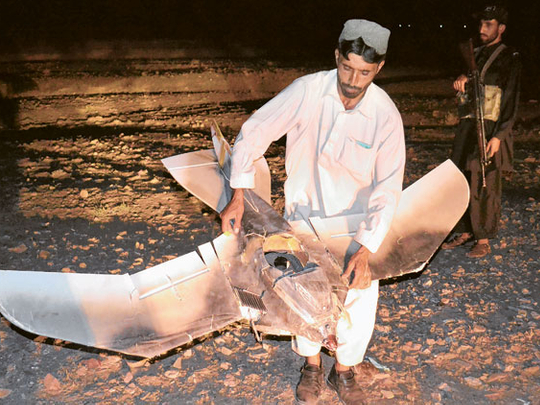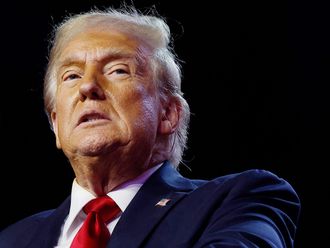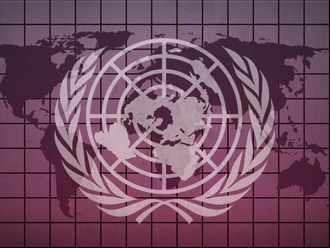
It’s clear the Obama administration needs to answer for failing to secure the US consulate in Benghazi, Libya, where four Americans died in a September terrorist attack. Yet the accountability debate is getting in the way of the more important discussion the Benghazi attack should provoke. That’s a debate over whether the US has the right counterterrorism strategy to start with. The administration claims its elimination of Al Qaida leaders using drones and special operations forces has crippled the organisation. Has it, really?
The Benghazi attack occurred a day after Al Qaida chief Ayman Al Zawahiri urged Libyans to avenge the death of his top lieutenant, Libyan Yahya Al Libi, in a drone strike in June in Pakistan. If Zawahiri’s call prompted the attack on the Benghazi mission, Al Qaida, far from being a spent force, retains sufficient capability to threaten US security. Even if the Benghazi attack had nothing to do with Al Qaida, there’s no doubt the organisation, and like-minded groups, is enjoying a comeback in other places, notably Mali and Yemen. How did this happen?
After the 9/11 attacks, the US saw the war on terrorism as a battle of ideas: Violent extremism had to be defeated by moderate Islam and the spread of liberal western values. The Iraq war was largely an effort to install a democracy in the heart of the Arab world. Because war proved the wrong way to build democracy, however, American policymakers became convinced that the whole idea of addressing terrorism through reform was unfounded.
Accordingly, the Obama administration took a far narrower approach. Its counterterrorism policy has been focused on relentlessly hounding Al Qaida leaders, relying on drones in the skies and special forces on the ground to eradicate them. The campaign has had successes, driving Al Qaida out of Afghanistan, loosening the group’s hold over the insurgency in Iraq, and disrupting operations by removing effective leaders such as Anwar Al Awlaki and Osama Bin Laden.
It has been a seductive policy. Drones are a low-cost, low- risk way to wage war. They give the impression a country can defeat terrorism without engaging in costly military campaigns, economic development or nation-building. The administration insisted the policy was working, and the country bought it. This might have dulled the instinct to better protect facilities such as the US mission in Benghazi.
Taking seriously the threat of violent extremism in newly democratic Libya would have challenged the administration’s claim that it was defeating the jihadists. Yet history tells us that assassination alone isn’t an effective strategy.
During the Vietnam War, the CIA killed thousands of Vietcong leaders in Operation Phoenix. The campaign set the Vietcong back, but the organisation survived it. The effort to decapitate Al Qaida looks to be similarly futile. Drones have killed Al Qaida leaders with devastating precision but with the unintended consequence of pushing the organisation out of its lair in northwest Pakistan and into every other broken part of the Muslim world.
The options for asylum, meanwhile, have spread beyond Africa’s Sahel region because of the effects of the Arab Spring. Syria’s civil war has pulled in global jihadists. Extremists are exploiting a breakdown of order in parts of Egypt, Libya and Yemen caused by the dissolution of authoritarian regimes.
As Americans learned after 9/11, terrorists thrive in failed or failing states. They need space to recruit, train, organise and launch operations. Given the growing number of terrorist redoubts, the limited US counterterrorism strategy is at the end of its effectiveness. Going forward, the US can no longer rely principally on drone strikes. The policy in Obama’s second term should focus more on shoring up failing states and denying Al Qaida new havens. Only then would counterterrorism efforts actually diminish the organisation.
Hiding behind Russia’s opposition to a United Nations resolution on Syria, the US has done almost nothing to stop the country’s disintegration. The Obama administration needs to assert leadership in organising the opposition, forging a ceasefire and facilitating the exit of President Bashar Al Assad. This would not only stop the violence in Syria, but also reduce the chances of the country becoming the next field of jihad. The US must also help Libya build effective state institutions and assist Egypt and Yemen in addressing the decline of social order and state authority. That requires greater diplomatic engagement, economic aid and support for civil society. This is an ambitious agenda, but the US can no longer afford a minimalist approach. In the campaign, President Obama identified terrorist networks as the most serious threat to US national security. His response should be as serious as that threat.
— Washington Post
Vali Nasr is dean of the Paul H. Nitze School of Advanced International Studies at Johns Hopkins University and a senior fellow in foreign policy at the Brookings Institution.









